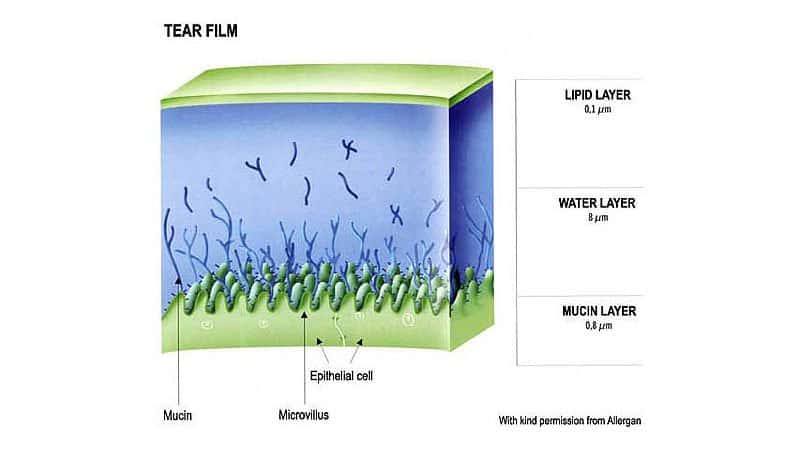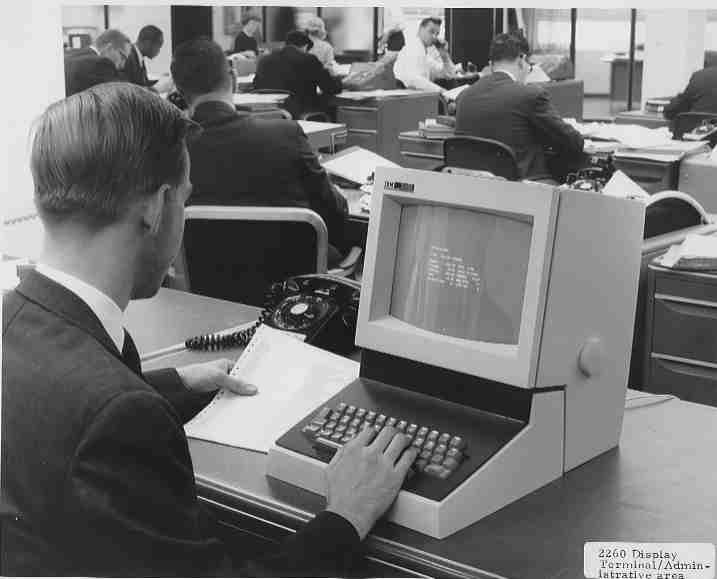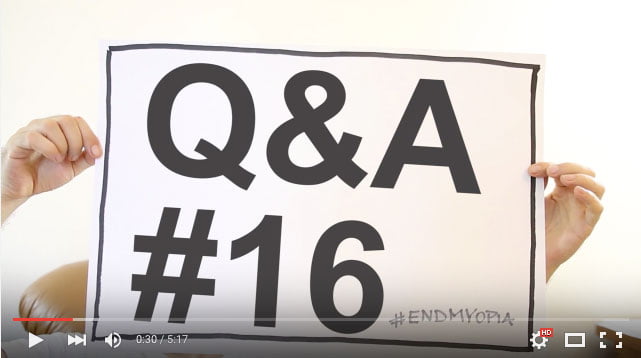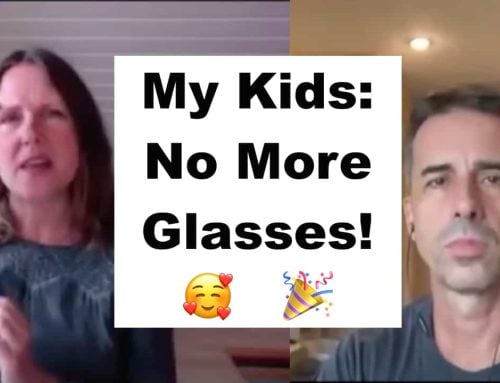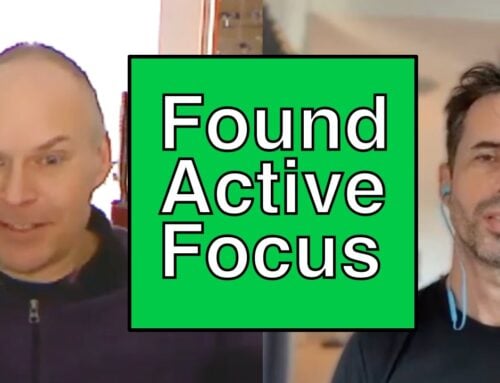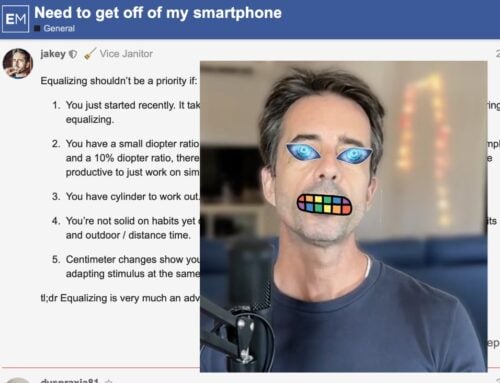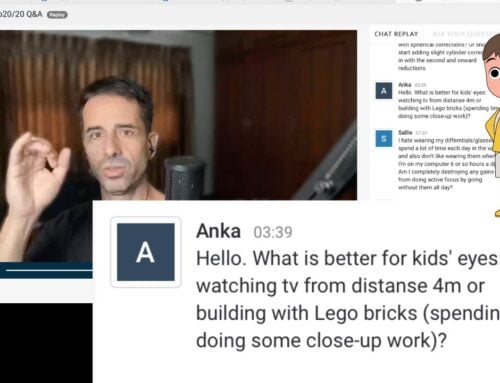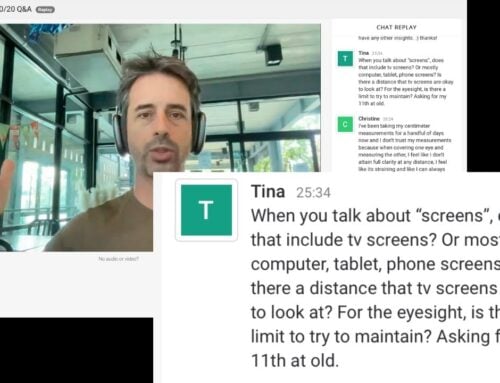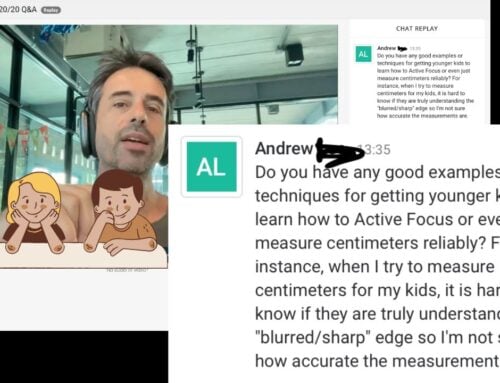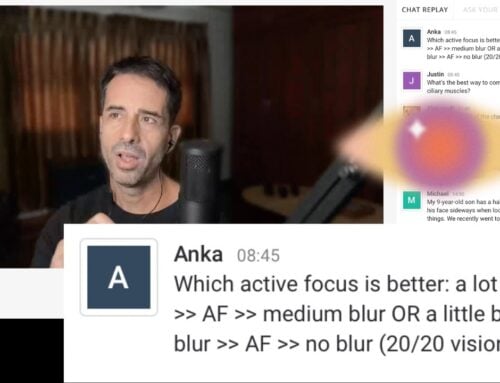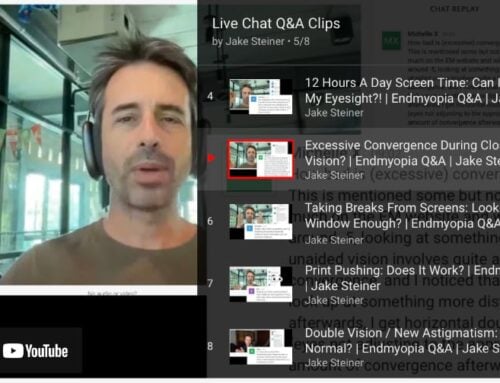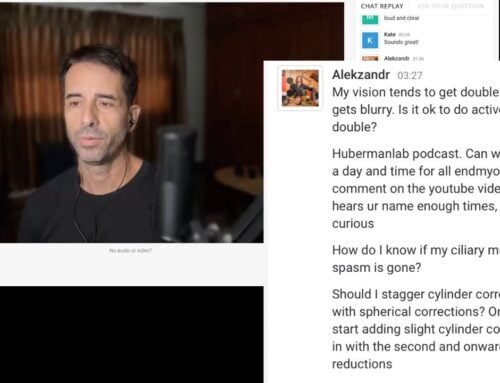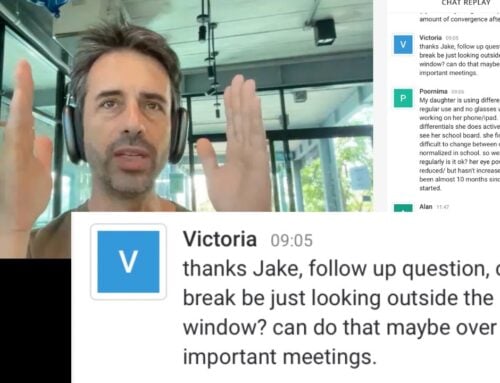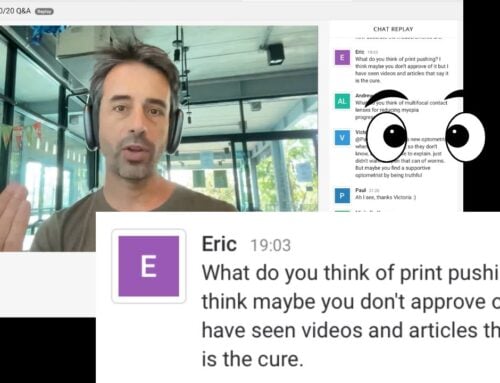First and unrelated, an interesting comment from the forum today:
I invested in a pair of +1.50 reading glasses yesterday (I know that I’m getting a LITTLE ahead, but having been teased about it in the 7 emails, I knew I was going to have to give it a shot eventually), and I have to say that wearing them is an eye-opener (see what I did there?)! It is becoming really clear to me that my eyes have been coasting along without having to work for so many years, and I’m finding that the constant need to focus my eyes, though exhausting, will definitely serve me well in the long run!
(from Tori’s rather quite interesting thread “Why I Joined”; link works only for logged in students).
On to today’s topic, the matter of tear fluid and vision.
Tear fluid disruption can be contributing to poor eyesight and corneal damage.
If you work in front of a computer, in an office, chances are your eyes are dry.
Dry eye as a vision problem sounds benign enough. But it really is not. Dry eyes are a larger symptom of disrupted tear fluid coverage, which has all sorts of unfortunate consequences. Your eye relies on tear fluid for a number of functions, without which symptoms quickly start to appear. One of them is poor(er) eyesight. Another one is increased risk of corneal abrasion which unfortunately you won’t notice (in time). Dry eyes actually can cause your corneal tissue to become thinner, much like contact lenses do.
Part of the reason for dry eyes is the significantly reduced blink rate that is a consequence of extended close-up focus (we stare at computer screens, very low blink rate). Blinking is how tear fluid is delivered to the front of your eyeball. Less blinking, less tear fluid.
From back in 1993, when screens were video terminals, in the New England Journal of Medicine:
“The use of video display terminals is associated with a decreased frequency of blinking and an increased rate of tear evaporation, each of which can contribute to dry eyes. Artificial tears, and, in more severe cases, special spectacles4 provide relief from dry-eye symptoms. In addition, the width of the palpebral fissure, and hence the exposed ocular surface area, can be decreased by placing the terminal at a lower height, with the screen tilted upward. At a time when much research is focusing on the physiologic responses to the use of video display terminals, our findings should contribute to both the understanding and the correction of workers’ discomfort resulting from the use of these omnipresent machines.”
Source: “Dry Eyes and Video Display Terminals“
That’s right, Bob. I said video display terminal.
Note that they’re patently wrong about artificial tears. Those things are the devil. Unless you want a whole new dependency on yet another product that replaces the body’s natural function with a commercial product, don’t use artificial tear products.
More on that another time.
The other part of the dry eye equation is the low ambient humidity in most air conditioned office environments. You lose more tear fluid in low ambient humidity.
Your eyes are incredibly precisely tuned to achieve sharp vision. Every aspect plays a role, including the layer of tear fluid that is expected to layer on top of your eyeball. Lose any part of the natural equilibrium, and your vision suffers. That’s the short term effect, and the long term isn’t any better.
From the Survey of Ophthalmology, titled “Tear physiology and dry eyes“:
“The conditions of tear film formation and stability are governed by the surface chemical characteristics of the tear film system and by the proper functioning of the lacrimal apparatus. The tear film has to remain continuous between blinks in order to fulfill its function. The presence of an abnormal tear film results in dry eye states that can be detrimental to vision. The diagnostic tests presently available are limited mainly to approximately determining tear secretion rate and estimating epithelial damage by staining techniques. The only test that directly measures tear film stability is one which determines tear film breakup time. The treatment modalities depend on the type of irregularity causing the dry eye state and range from the application of artificial tear substitutes or the obstruction of the puncta to surgical alterations of the lacrimal system.”
Not that you’d notice detrimental effects to your vision, with the high minus prescription from your optometrist. That, like a double dose of morphine, everything always seems just fine with your eyes.
Epithelial damage (corneal abrasion):
Corneal abrasion is probably the most common eye injury and perhaps one of the most neglected. It occurs because of a disruption in the integrity of the corneal epithelium or because the corneal surface scraped away or denuded as a result of physical external forces.
You can prevent dry eyes, to a notable degree. A few bullet points to help you get started, in just a moment. But first …
A little of me looking ridiculous in front of a camera, in form of video Q&A #16:
It’s about dry eyes and tears and clearer vision, though in the context of myopia rehab rather than sanding your eyeballs staring at your screen all day in a bone dry office. Worth watching if you are working on improving your eyesight, otherwise just read on.
(Thumbs the Q&A video up for me if you liked it and watched it, and if you feel charitable today.)
Back to the business of taking care of your cornea, and eyesight:
Want to protect your eyesight? Start with your tear fluid:
- Take breaks from close-up. More than an hour and a half is way too much staring at the screen.
- If possible, opt for less air conditioning. Open windows, or a humidifier, anything to raise the ambient humidity to reasonable levels.
- No direct air flow to your face. That goes for office, in the car, public transport. Whatever you can do to avoid air blowing at your face, do that.
- Never use artificial tears. Unless you have a serious deficiency (a lot of post LASIK patients are somewhat screwed on that front), stay away from the stuff.
- Don’t wear contact lenses for close-up. Contact lenses take up a lot of tear fluid. Choose a (reduced prescription strength) pair of glasses, instead.
- Stay hydrated. How do you know if you are? Clear pee. Yup, I said it. And stick with water, avoid sugary beverages as much as possible.
- Bring a natural tear to your eye by following my new Twitter thing. It’s the natural tear inducer, and as a bonus you’ll also be reminded of new and ever amazing posts.
And of course, like the studiously neglected #endmyopia Facebook. Like it now and then forever be able to say, “hey I knew guru-Jake before he was famous”.
Housekeeping:
An astute reader points out a mistake in my post about free medical research papers. In the U.S., as I’m told, all funding comes from the NEI (National Eye Institute), and ultimately the American tax payer. Which translates to no real benefit to paying for the papers instead of just getting them through the university library, for free.
Cheers,
-Jake

